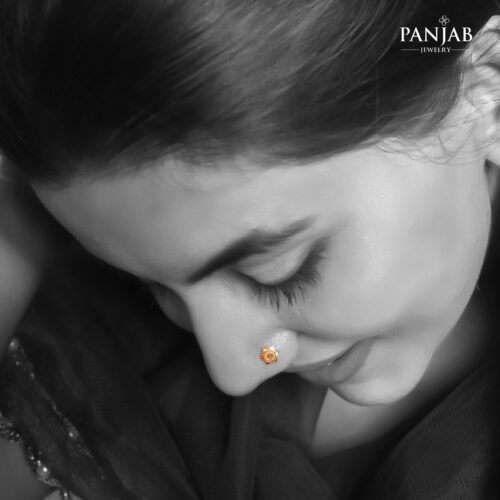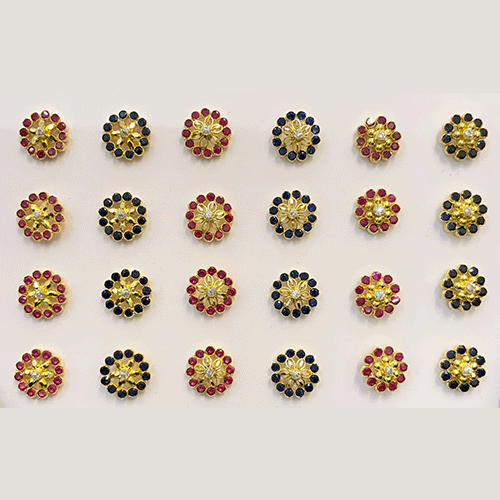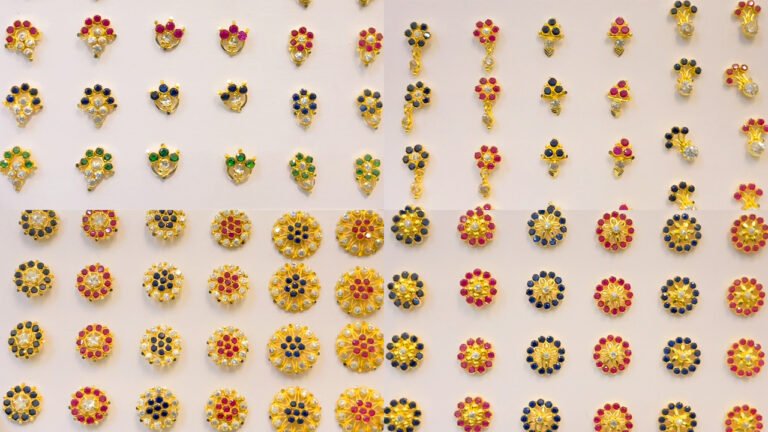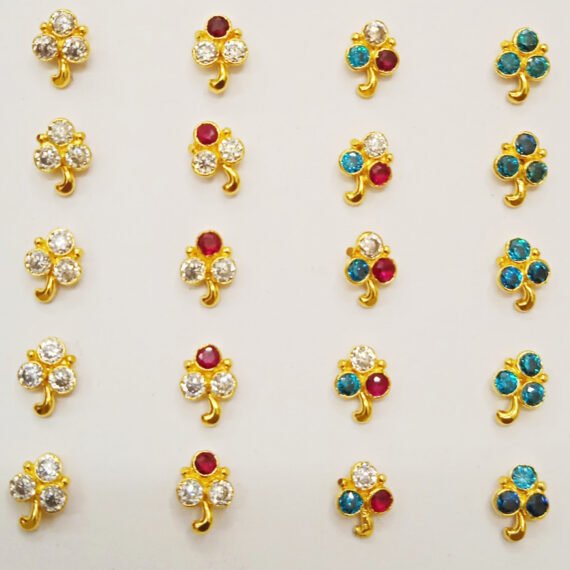Shopping Bag
No products in the cart.
In the rich tapestry of Indian jewelry traditions, the nose pin stands as a delicate yet profound adornment, particularly cherished in South India. This small but significant piece of jewelry has graced the faces of countless women over centuries, weaving together a story of tradition, culture, and timeless elegance. As we delve into the history and significance of nose pins in South India, let’s embark on a journey that celebrates this enduring symbol of grace and heritage.
The history of nose pins in South India is deeply intertwined with the region’s rich cultural heritage. These dainty ornaments can be traced back to ancient civilizations like the Indus Valley, where they were crafted from materials such as gold, silver, and precious gemstones. Initially worn as a symbol of social status and wealth, nose pins gradually became a part of everyday wear, adorning women from all walks of life.
Over the centuries, nose pins evolved in design and craftsmanship, reflecting the cultural diversity and artistic sensibilities of South India’s various regions and communities. This evolution transformed them from mere ornaments into symbols of cultural identity and personal expression.

In South India, the significance of the nose pin extends far beyond its aesthetic appeal. It holds a special place in a woman’s life, marking important milestones and rites of passage. The nose pin symbolizes:

2. Fertility and Prosperity: Nose pins are believed to enhance a woman’s fertility and bring prosperity to her family. They are often given as gifts to brides during weddings, symbolizing the blessings of a fruitful and harmonious union. This connection to fertility echoes the region’s agricultural heritage, where abundance and prosperity were highly prized.

3 . Cultural Identity: Nose pins are an integral part of South Indian cultural identity. They are worn with pride, reflecting the wearer’s connection to her heritage and traditions. Each design and style of nose pin often carries the legacy of a specific community, serving as a visual testament to the region’s rich diversity.

Nose pins come in a captivating array of designs, each reflecting the artistic sensibilities of different regions and communities:
1 . Mookuthi: Traditional South Indian nose pins, often studded with precious gemstones, are known as “Mookuthi.” They are characterized by their intricate craftsmanship and elaborate designs, featuring motifs inspired by temple architecture and nature. Mookuthi nose pins are a testament to the region’s devotion to artistry and spirituality.

2 . Valayam: Worn mainly by brides in some South Indian communities, the Valayam is a nose ring that extends across the cheek, showcasing a dazzling display of intricate design and gemstones. Valayam nose pins are a visual masterpiece, symbolizing the grandeur and significance of weddings in South India
India boasts a rich tapestry of nose pin styles, each reflective of the culture and craftsmanship of different regions. While there are countless variations, some noteworthy styles include:
1 . Casting Nose Pins: Crafted through the process of casting, these nose pins are known for their durability and intricate designs. You can find casting nose pins gracing the noses of brides in Chennai and Madurai, adding a touch of elegance to their bridal attire

2 . Handmade Nose Pins: Handcrafted nose pins, as the name suggests, are meticulously created by skilled artisans. These nose pins are celebrated for their uniqueness and personal touch. In Tamil Nadu, particularly in Coimbatore and Trichy, handmade nose pins are highly sought after, with each piece telling a story of craftsmanship and culture.

Despite the passage of time, nose pins continue to be an essential element of South Indian jewelry collections. They effortlessly blend tradition with modernity, making them a versatile accessory for various occasions. From classic weddings to everyday wear, the nose pin’s appeal remains unwavering.
In the modern era, South Indian women embrace nose pins as a way to connect with their roots while expressing their individual style. The designs have evolved to cater to contemporary tastes, offering a wide range of choices that resonate with younger generations. This evolution ensures that the cultural significance and elegance of nose pins continue to thrive in South India.
For those seeking the perfect nose pin to embrace South Indian culture and elegance, Panjab Jewelry offers a diverse collection that pays homage to tradition while celebrating contemporary design.
Working hours Mon-Sat 10:00am-6:00pm
+91 91686 65000
WhatsApp us
